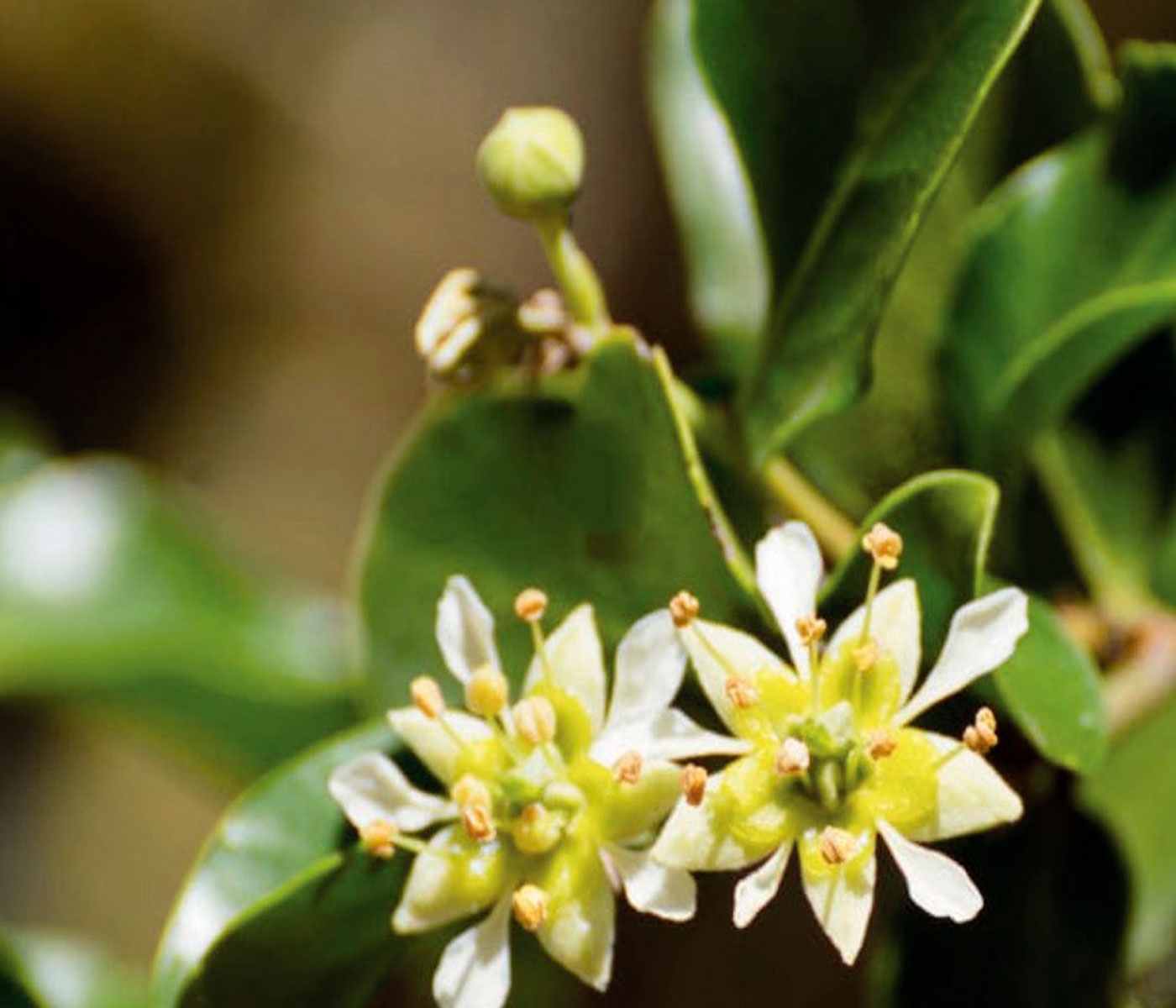Content available at: Indonesia (Indonesian) Melayu (Malay) ไทย (Thai) Tiếng Việt (Vietnamese) Philipino
INTRODUCTION
- In the past 2 decades, the global poultry industry has faced dramatic changes in the feeding strategies, primarily due to the reduction of in-feed antibiotic (including ionophores) usage.
- However, the need to maintain intestinal health and improve broiler performance has not changed, and in the absence of antibiotics, that need is actually greater.
- In this non-antibiotic era, intestinal health disorders are ranked as the major challenges to the poultry industry worldwide.
- Coccidiosis and necrotic enteritis (bacterial enteritis) have become the prominent diseases affecting broiler productivity and economic return (estimated USD 20 billion in yearly losses).
- As a result, many specialists are anxious to learn of new non-antibiotic feed additives that may reduce the challenges produced by Eimeria spp. and Clostridium perfringens and improve poultry growth performance as well.
Among many natural strategies that have been studied and then applied commercially, saponins are gaining traction throughout the livestock and poultry industries.
SAPONINS
Saponins are natural compounds found in a large variety of plants that have been shown to produce a wide variety of biological effects.
Quillaja saponaria, the Chilean soap bark tree, and Yucca schidigera, a plant of the arid regions of the American southwest, have become major sources of commercially used saponins.
There are several benefits of Quillaja and Yucca saponins in animal feeding:
- Ammonia reduction.
- Antiprotozoal and antimicrobial activity.
- Stimulation of the immune response.
- Anti-inflammatory and antioxidant effects.
- Enhanced nutrient digestibility.
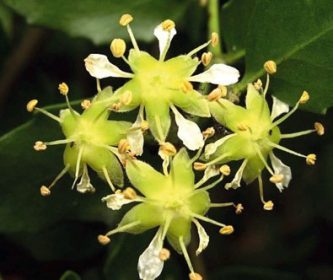
Saponins have been widely used in US since 2000’s, and in the last 10 years it has been estimated that about 25% of American broilers receive a saponin based product in feed (>2.5 billion broilers per year). In Brazil saponins are approved as natural growth promoters, and most recently, their use has been expanding in Europe and Asia.
KEY SAPONINS BENEFITS FOR POULTRY HEALTH AND PERFORMANCE
Immune responses
Quillaja saponins (QS) have been used in both human and animal vaccines as adjuvant to increase immunogenicity of an antigen, resulting in increased antibodies and cytotoxic of T-lymphocytes.
In turn, vaccine efficacy is improved. Recently QS was used as adjuvant in a Covid-19 and malaria vaccine development.
- In poultry, many studies suggested that in-feed supplementation with saponins, stimulates specific immune response (cellular & humoral) against different pathogens.
Bafundo et al, demonstrated that birds raised in a high challenge environment and fed a diet containing a combination of Quillaja and Yucca saponins, showed a significant reduction in numbers of Clostridium perfringens and Salmonella spp. incidence (Table 1).
- As expected, significant improvements in bird performance occurred as well.
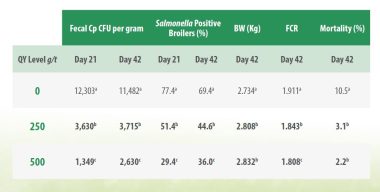
counts, percent Salmonella positive broilers and performance (Bafundo et al., EC Veterinary Science, 2021).
Gut integrity and nutrient digestibility
In the presence of high enteric disease challenge, or coccidiosis vaccination, birds fed with saponins show a significant improvement of intestinal villus height and reduction crypt depth.
In addition, up-regulation of tight junction proteins (reduced gut permeability) and improvements in the apparent intestinal uptake of dry matter, organic matter, fats and minerals, and N retention occurred (Table 2 and 3).
As a consequence, better feed conversion rate (FCR) and higher body weights (BW) were recorded in saponin-fed groups (Table 4).
Trial results and observations indicated that the positive effects in the gut integrity and nutrient digestibility may be associated with the reduction of the coccidia replication and changes in the bacteria populations in gut.
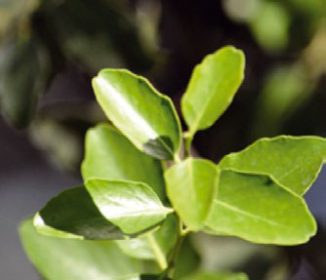
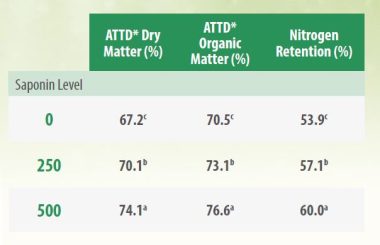
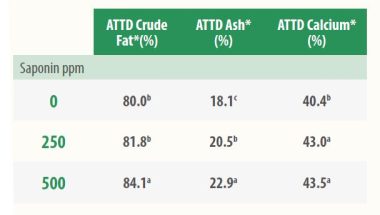
Tables 2 and 3. The effect of graded levels of Quillaja and Yucca saponins on percent apparent total tract digestibility
(ATTD) and percent nitrogen retention of broilers measured from days 21 to 25 (Bafundo et al., Br. Poult. Sci. 2021).
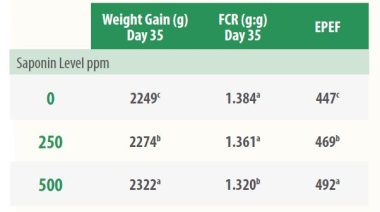
Anticoccidial Activity
Since saponins have membranolytic properties, they can complex with cholesterol in protozoal (and bacterial) cell membranes, causing cell lysis.
Although it seems evident that the reduction in oocyst passage is a direct result of the anticoccidial effects of Quillaja and Yucca saponins, quillaja saponins are also known to improve antigenic recognition, and this effect may result in enhanced immune responsiveness of birds to the presence of coccidial infection and contribute to the reduced reproductive potential of the parasites.
Recent research has shown that saponins can significantly reduce the adverse effects of Eimeria infections in chickens, by reducing the oocyst per gram of feces (OPG) by 40% to 60%, decreasing lesion score (LS), and providing performance improvements (FCR, BW and Mortality).
Although saponins are not anticoccidials, these molecules, when used in combination with ionophores or chemicals anticoccidials, improve anticoccidial effects of these methods and provide better performance.
- In birds vaccinated against coccidiosis, saponins enhance the immune responses, reduce the coccidia-vaccine intestinal damage and enhance performance parameters.

Long lived birds performance parameters
Currently, there is not a lot of published data on the effects of saponins in broiler breeders, breeder pullets or in layers.
For the past few years however, commercial companies have evaluated saponin use in long-lived birds and are finding applications leading to better performance and productivity, such as improved uniformity and reduced mortality in pullets, as well as improved egg production and egg shell quality.
Considering previously mentioned effects in lowering intestinal pathogen loads, maintaining gut integrity, and improving digestibility of critical nutrients, saponins are likely to have a meaningful effect on long-lived birds.
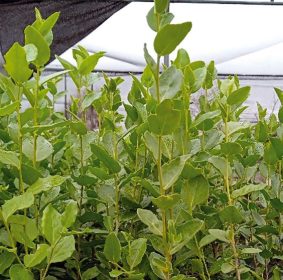
CONCLUSION
- Saponins are plant-derived products that exert numerous biological effects in broilers.
- Both research trials and commercial use have shown that these products improve intestinal health by decreasing the occurrence of coccidial lesions, reducing the severity of intestinal bacterial infections, and promoting better intestinal immunity.
- In addition, studies demonstrate that nutrient digestibility is enhanced when saponins are fed to growing broilers.
- Saponins have been shown to compliment the activity of many anticoccidial programs and have been widely used to improve the responses of live coccidiosis vaccines.
- They are compatible with feeds additives of all types.
